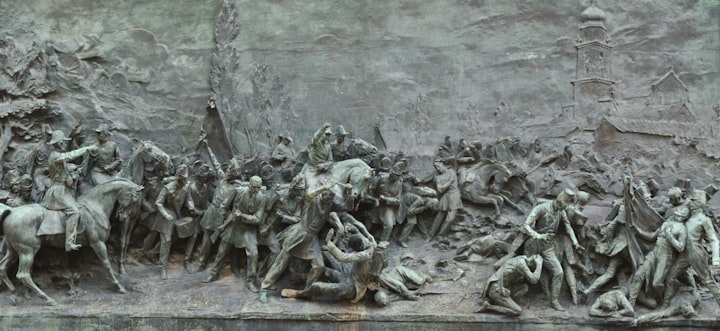Duce and Caudillo
Why the fascist regimes in Italy and Spain were so different

Creeping out of the First World War and stumbling into the roaring 1920ies, the ideological landscape of Europe changed dramatically. Italy and Spain both fell victim to fascist regimes. Although the ideological direction looks alike on the surface, both the foundation of the regimes in Rome and Madrid and the impact on international relations differed considerably.
Roaring into the 1920s
In 1917, the Bolshevik Revolution established a violent and bloody communist regime in Russia. Lenin's and Trotsky's regime produced strong anti-communist sentiments in the West. Communism was aggressive and expansionist (world revolution), and the Great War's winners and losers were threatened by revolution. In Hungary, a communist regime even seized power for a short moment. Anti-communism became the dominant foreign policy doctrine in the US and many other countries. And the most anti-communist was the emerging fascist movement. The ideological underpinnings of both Spanish and Italian fascism were rooted in both anti-communist and nationalist sentiments. That makes two drivers: Internally FOR something and externally AGAINST something. But there were more drivers, especially in Italy.
Italy: Anti-communist, Anti-catholic, Anti-monarchist
Italy won the war and was bound to play a significant role in the Paris Peace Conferences and the League of Nations. Still, the country's politicians, including the democrats, established a narrative of humiliation as territorial gains – promised in the secret London Treaty by Britain and France – could not materialize. Italian claims on the Eastern side of the Adria went diametrically against the US policies and President Wilson's 14 points, which included nations' right to self-determination. For Italy, it felt a bit as if they lost the war. Perceived humiliation played a role in the decline of Italian democracy, amongst other factors, such as economic decline. The fascists presented themselves as an alternative to an already rotten and dysfunctional Italian democracy. Benito Mussolini, a former socialist, played this card when founding the Fasci Italiani di Combattimento, which assembled war veterans without perspective, brutalized by the war, and ready to fight anybody identified as the enemy. The machismo of psychological wrecks was ready to assume power.
War is to man what maternity is to a woman. From a philosophical and doctrinal viewpoint, I do not believe in perpetual peace.
(Benito Mussolini)
Under Duce Mussolini, Italian fascism was extremely nationalist, promoting the idea of a powerful and united Italy. One of the narratives pushed was the revival of the Roman Empire's glory (romanism). Economically, not unsurprising with respect to Mussolini's past, the movement was anti-capitalist and corporatist. Culturally, futurism, a cultural movement that idealized modernity and the power of technology, framed the aesthetics of the movement. Initially, Mussolini's regime was anti-capitalist, anti-monarchist, and strongly anti-catholic. Only later, Mussolini tried to stabilize his rule by striking a deal with the Holy Seek. The Lateran Treaty of 1929 provided the Vatican with statehood. This holds until today.
Spain: Anti-communist, Catholic, Monarchist
Spain differed considerably from Italy. The Spanish Caudillo, Francisco Franco, had a different background. He evolved from the military as a classical career soldier born into an upper-class family close to the Catholic Church, as many Spanish conservatives were then and still are. A supporter of the Spanish monarchy, Franco was not amused by the abolition of the monarchy and the establishment of the Republic in 1931.
One thing that I am sure of, and which I can answer truthfully, is that whatever the contingencies that may arise here, wherever I am there will be no communism.
(Francisco Franco)
After the coup d’état and the Spanish Civil War, the General established himself as president and dictator of a regime that saw itself as a bulwark against the spread of Marxist and anarchist ideologies, which were seen as threats to Spain's traditional values. Although the Republican side Franco fought in a bloody civil war was far from being communist, the anti-communist narrative was used way into the Cold War. But as compared to Mussolini's movement, the Spanish coup d'etat aimed at preserving the old order, not overcoming it.
Impact on International Alliances
Both fascist governments made significant marks on international alliances, albeit in different manners. Italy's initial years under fascist rule saw Rome participating in fluctuating alliances. However, by the late 1930s, Italy gravitated towards Nazi Germany, manifested by the Rome-Berlin Axis agreement. Italy's foreign policy became increasingly aggressive, marked by confrontations and imperialist adventures in Europe (Adria) and Africa (Abyssinia, Libya).
Although sympathetic to the Axis powers, Spain maintained a policy of neutrality during WWII, riding a non-belligerent course, mainly due to its internal challenges and the devastations of the recent civil war. Franco primarily focused on stabilizing his regime rather than engaging in broader European conflicts. He signed the Anti-Comintern Pact with Hitler and Mussolini as a mark of reciprocity for military support of Germany and Italy during the Civil War. But when Hitler asked for Spanish help in the war, Franco's demands (the French colonies in North Africa and Gibraltar) were unmet. Allegedly, the German and Spanish dictators did not really develop sympathies for each other, and Hitler's anti-religious stance may have played a role in this. And when Franco considered entering the war more seriously, Mussolini secretly sorted out ways to leave it, as Italian campaigns weren't going well. In the end, Spain sent some "volunteers" to fight against the Soviet Union under German command following the banner of anti-communism.
Spreading the Rule: Expansionism and Imperialism
Italian and Spanish imperialist ambitions starkly differentiated the Italian and Spanish fascist regimes. Mussolini was overtly imperialistic, and the grandeur of Rome as a cultural artifact was embedded in the justification of imperial war. Beyond the invasions of Ethiopia, Libya, and Albania, he dreamt of a Mediterranean empire under Italian dominance. These ambitions led Italy into multiple confrontations, including failed campaigns in Greece and a disastrous North African campaign against British forces. Unfortunately for Mussolini, Italy's ambition did not match the military power of the country. Many campaigns failed or were extremely costly.
Franco's Spain was conspicuously non-expansionist, at least when considering the resources available for foreign-policy adventures. After consolidating power after the end of the Civil War, Franco focused on internal stabilization and reconstruction. While there were minor territorial disputes, like that over Gibraltar, Spain largely refrained from external territorial ambitions, and it took way into the postwar era that Spain lost the remaining colonial possessions in Morocco and South Sahara.
Differences and Similarities
While Spanish and Italian fascist regimes arose from nationalism and anti-communism, their paths diverged in ideology, international alliances, external support, and imperialistic goals.

Italy, under Mussolini, aimed for international prominence, forging alliances that directly impacted WWII's trajectory. In contrast, Franco's Spain was more introspective, prioritizing national stability and traditionalism, with its international interactions shaped by pragmatism. The "antis" of Italian fascism (anti-capitalism, anti-communism, anti-monarchy, anti-capitalism) were only met on the Spanish side by anti-communism. Established old elites of the conservative camp ruled Spain under the Caudillo. It missed the revolutionary drive of Italian fascism. Preserving, not overcoming, was the motto of the day.
Ultimately, both regimes - and Mussolini and Franco personally - were responsible for slaughtering in international and civil wars and murder of political enemies. The setup may have been different, but the results were devastating for both nations.
About the Creator
Jurgen Dieringer
J Dieringer is a professor of international relations by profession and a musician, writer, and chess player by passion. He strives to merge those inputs and tackle the intersection of arts and science.






Comments
Jurgen Dieringer is not accepting comments at the moment
Want to show your support? Send them a one-off tip.